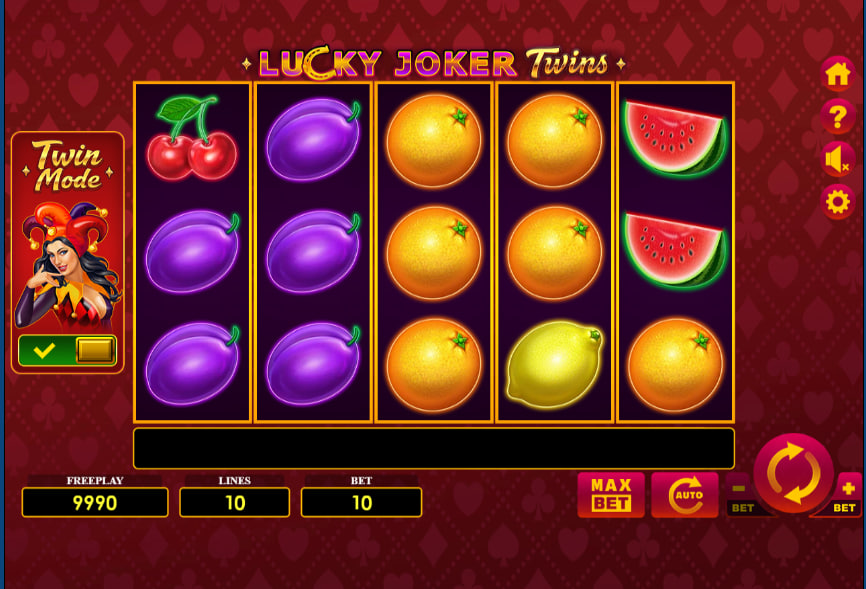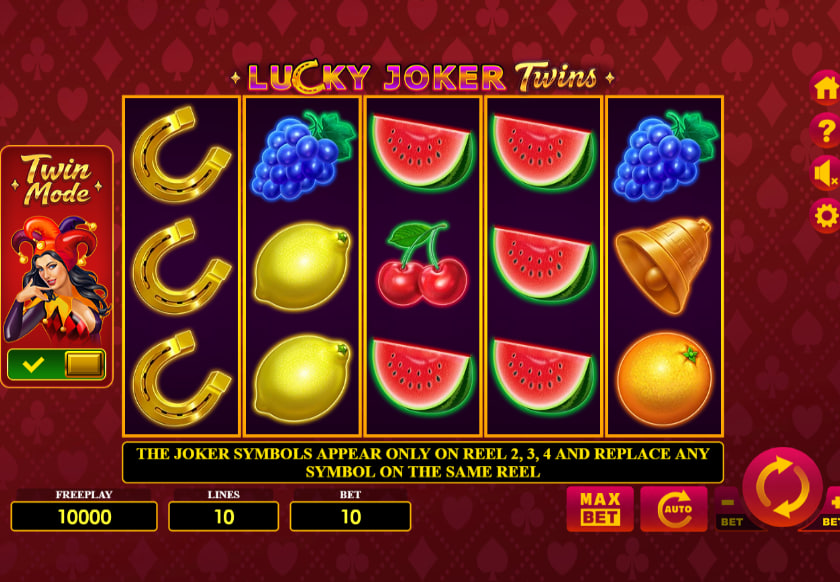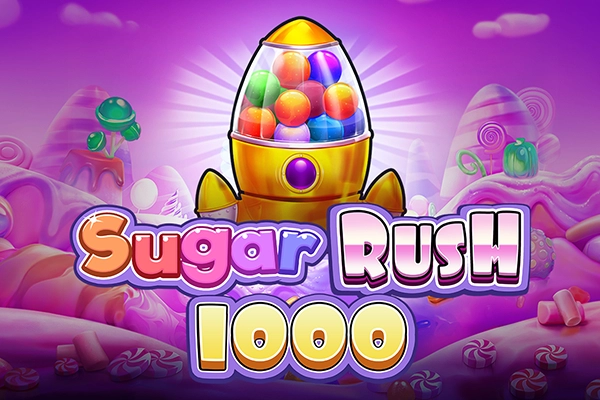KA Gaming’s Lucky Joker Twins presents a modern interpretation of the classic fruit slot machine. The game utilizes a familiar 5×3 layout with 10 paylines, populated by crisply rendered fruit symbols and a high-paying Red 7. Its core gameplay is centered on an expanding Joker Wild, which appears exclusively on the three middle reels. The slot’s primary innovation is the player-activated “Twin Mode,” a choice that fundamentally alters the wild’s behavior. When this mode is engaged, a non-winning spin that includes a wild symbol triggers a sticky wild respin for a second chance at a payout. Further separating it from standard slots is its dual Scatter system, which includes a traditional scaling Bell Scatter and a fixed-value Star Scatter that pays only for a three-of-a-kind result. These carefully integrated features provide a layered experience without resorting to a conventional free spins round.
KA Gaming’s Lucky Joker Twins presents itself with the familiar veneer of a classic fruit-themed slot. However, a closer examination of its mechanics reveals a deliberate design that layers unconventional features onto a traditional foundation. The game bypasses common bonus structures, such as free spin rounds, to instead focus player attention on two pivotal elements: a player-selectable “Twin Mode” that introduces a sticky wild respin, and an unusual dual Scatter pay system. This review offers a detailed breakdown of these systems, intended for the experienced player interested in the mechanical underpinnings of modern slot design. We will dissect how these features interact to create a gameplay experience that is substantively different from other titles in the classic slot genre.

The Core Gameplay Loop and Symbol Hierarchy
The game operates on a standard 5×3 grid with 10 fixed paylines that award wins from left to right on adjacent reels. The symbol set is a nod to the origins of slot machines, but with a clear value hierarchy that influences the game's rhythm. At the top of the paytable sits the Red 7, which is notable not only for offering the highest line payout but also for being the only standard symbol to award a win for a two-of-a-kind combination. This small detail slightly increases the frequency of minor returns and helps sustain gameplay.
Below the Red 7, the paytable is divided into distinct tiers. The upper-mid tier consists of the Golden Horseshoe and the Watermelon. The lower-mid tier contains the Grapes, while the base tier groups together the Plum, Lemon, and Cherries with an identical, lower payout structure. The primary catalyst for action in the base game is the Joker Wild symbol. This symbol is restricted to appearing on reels 2, 3, and 4. When it lands, it is not a simple 1×1 tile; it immediately expands to cover the entire reel, a function that significantly increases its potential to complete or extend winning paylines across the grid. This expanding wild is the foundational mechanic upon which the game’s more complex features are built, serving as the bridge between the standard game and the more volatile Twin Mode.
A Deeper Look at the Game's Central Features
The most significant mechanical deviation in Lucky Joker Twins is the Twin Mode. This is not a randomly triggered event but a conscious choice made by the player via a dedicated toggle on the user interface. Activating this mode alters the fundamental behavior of the wild symbol system. With Twin Mode engaged, the standard Joker Wild is replaced by the Joker Twin symbol on the central three reels. While it retains the core function of expanding to fill any reel it lands on, its true value is revealed through a specific and conditional respin feature.
This added layer of functionality is a Sticky Wild Respin that triggers under a very precise condition: a Joker Twin must land on one of the central reels, and the resulting game state must not produce any winning combination. In this scenario, the game grants a single, automatic respin. During this respin, the expanded Joker Twin wild remains locked in place, providing a second chance to form winning lines with the newly spun symbols on the other reels. This mechanic can be viewed as a form of “bad luck protection,” turning a dead spin into an opportunity with enhanced potential.
The Unconventional Dual Scatter System
Further distinguishing the game from its peers is the implementation of two functionally different Scatter symbols that coexist on the reels. This dual system provides an alternative path to significant payouts that operates independently of the payline structure and the wild-driven features. It’s a design choice that adds a parallel objective for the player during every spin, creating a more dynamic and less predictable environment.
The first of these is the Bell Scatter. It functions in a more traditional manner, awarding a payout when three, four, or five Bells appear anywhere on the grid, irrespective of their position. Its payout values are substantial, with five Bells granting a win second only to a five-of-a-kind combination of the top-paying Red 7 symbol. This makes the Bell a consistent source of high-end volatility within the game, a symbol whose appearance is always a significant event.
The second, and more peculiar, is the Star Scatter. Its behavior diverges sharply from the norm. The Star symbol provides a single, fixed payout value, and it does so only when exactly three appear on the reels in a single spin. It does not pay for four or five symbols. This transforms the Star from a standard scaling Scatter into a specific, high-impact event trigger. Its payout for three symbols is considerable, equivalent to the payout for four Bell Scatters. This design creates a unique dynamic; instead of hoping to accumulate more Scatters for a bigger win, the player is watching for a very specific configuration. It functions less like a symbol and more like a jackpot trigger for a fixed, mid-tier prize, adding a sharp spike of variance that complements the more linear progression of the Bell Scatter payouts.
Visual Presentation and Thematic Execution
While Lucky Joker Twins utilizes a classic theme, its graphical execution is clean and polished. The fruit symbols are rendered with a high degree of detail, featuring pronounced highlights and deep shadows that give them a vibrant, almost lacquered appearance. This modern digital art style avoids the pixelated or simplistic look of older fruit machines, aiming for a crisp and visually appealing presentation on high-resolution screens. The background is a reserved and subtly patterned shade of dark red, decorated with faint card suit imprints. This choice ensures that the vibrant reel symbols remain the primary focus of the player’s attention, preventing any visual clutter.
The animations are functional and reinforce the game's mechanics without being intrusive. The key animated event is the expansion of the Joker and Joker Twin symbols. This action is swift and clear, with the character art instantly filling the reel to signal its transformation into a wild stack. Win animations consist of simple line traces and symbol highlighting, which is appropriate for the game's classic pacing. The user interface is a strong point; it is uncluttered, with clear readouts for balance, bet, and wins. The placement of the Twin Mode toggle is particularly well-considered. It is located prominently on the left side of the screen, separate from the standard spin controls, clearly communicating that it is a persistent mode selection rather than a per-spin bet option.

The decision to use 10 fixed paylines streamlines the gameplay, making win recognition immediate and intuitive. There are no complex calculations for the player to consider regarding active lines; the structure is constant, providing a stable foundation. Upon this foundation, the Twin Mode acts as an optional layer of complexity and volatility. Players can engage with the game in its most straightforward form or activate the mode to introduce the respin mechanic, effectively allowing them to adjust the game's risk-reward profile to their preference. This creates a valuable duality in the experience.
KA Gaming's design philosophy with this title appears to be one of targeted innovation. Instead of reinventing the fruit slot, they have preserved its core identity and injected novelty through very specific mechanical twists. The complete absence of a separate free spins bonus round is a significant and deliberate choice. This decision concentrates all of the game's mechanical weight and payout potential within the main game spin. The focus is entirely on the interplay between the expanding wilds, the conditional respins, and the dual scatter pays. For players who appreciate the immediacy of classic slots but are seeking fresh mechanics, this approach is quite effective. It delivers a familiar format that has been cleverly re-engineered with features that create new patterns of risk and reward, proving that even the most traditional slot formats have room for intelligent mechanical evolution.













